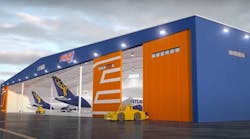Licensed Aircraft Maintenance Engineers attending the 40th AEI (Aircraft Engineers International) Annual Congress in Valletta, Malta were presented with a staggering amount of evidence detailing safety lapses by both commercial airline operators and aviation regulators. Indeed delegates were also informed that recent ICAO (International Civil Aviation Organisation) safety audit results revealed some shocking truths about the aviation industry.
ICAO figures show an average rate of compliance with their regulations of around 60% whilst national aviation safety regulator manning levels have on average only attained 24% of their target levels. “A scandalous situation” says Fred Bruggeman, AEI’s Secretary General. “These facts explain why regulatory authorities consistently fail to uncover, let alone correct serious safety lapses.”
AEI have previously claimed that safety regulators fail to investigate serious safety lapses and Mr Bruggeman says “we now know why. It is not possible for industry regulators to oversee a safety critical industry without being properly resourced.”
Delegates at congress were presented with evidence and advice on how to deal with the ever increasing methods employed by commercial operators to avoid their safety responsibilities. Occurrence reporting and whistleblowing were also discussed as airlines, supported by regulators, wish to further deregulate the industry by making the commercial operator fully responsible for safety. This move towards self-regulation is apparently based upon an open and transparent safety reporting system. The evidence presented to congress however suggested that the aviation industry is not yet ready to take on such responsibility.
Licensed Aircraft Maintenance Engineers are responsible for certifying that an aircraft is in a condition for safe operation. They are licensed independently of the airlines by national aviation authorities rather than by the airlines themselves which should ensure maintenance activities are performed in the correct manner, to the highest standards and that safety is not compromised. The naming of licensed personnel with authority to release aircraft into service by signature is an accepted method of accountability that applies worldwide. It also reflects the fact that aircraft maintenance is an area of high potential danger and therefore critical to safe flight operations. Despite this, those same airlines pushing for self-regulation based upon a culture of open reporting and transparency are quite happy to terminate the employment of Licensed Aircraft Engineers raising safety issues. Colleagues who take their safety responsibilities seriously are often deemed by airlines to be a problem and all too often a simple logic prevails; Shoot the messenger and you remove the problem.
An unacceptable situation for AEI President Robert Alway, “Pressure on Aircraft Engineers to overlook safety issues has been steadily increasing as the priority for airlines shifts from safety to profit. Regulators need to do more to protect Aircraft Engineers who report safety problems. After all their actions could well prevent an accident and that is most certainly in the public interest.”
Further detailed information can be found on the AEI website:


